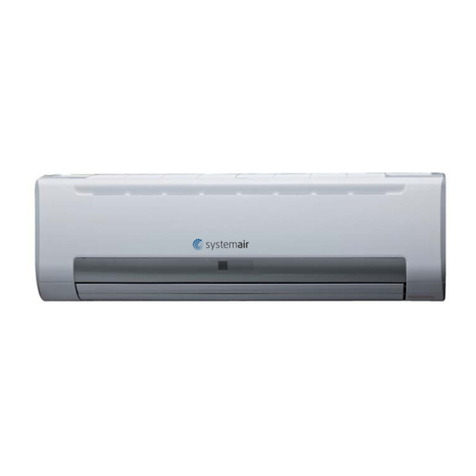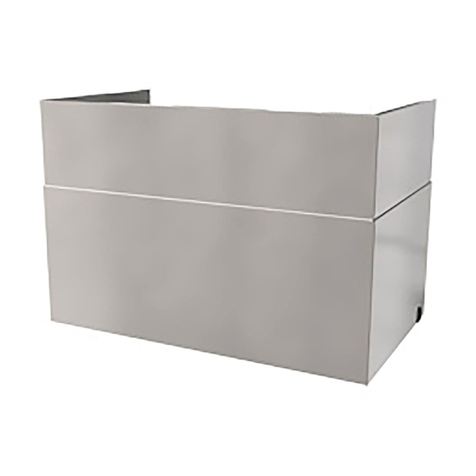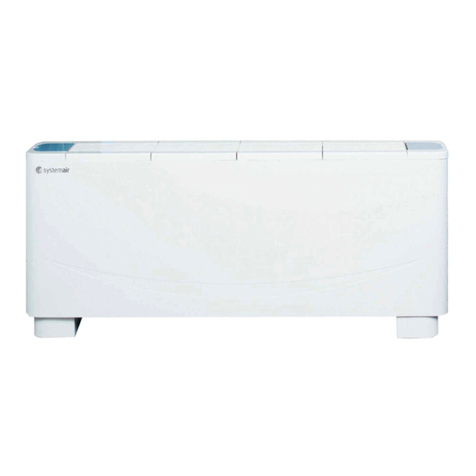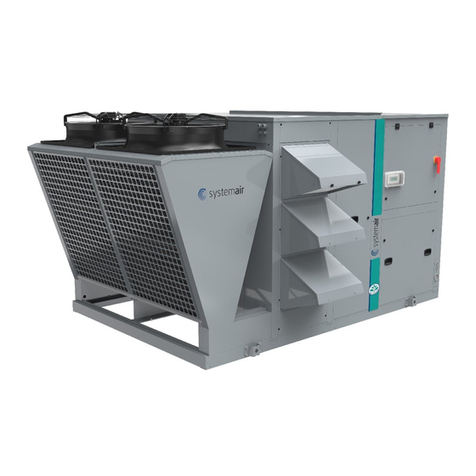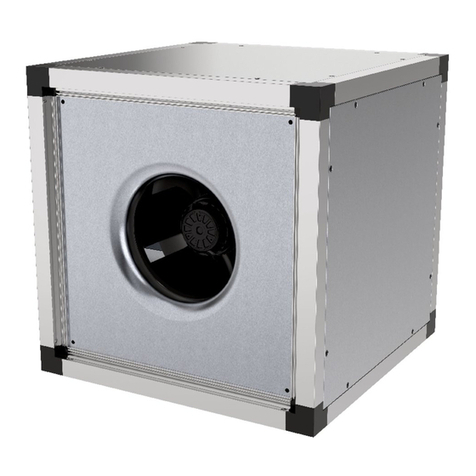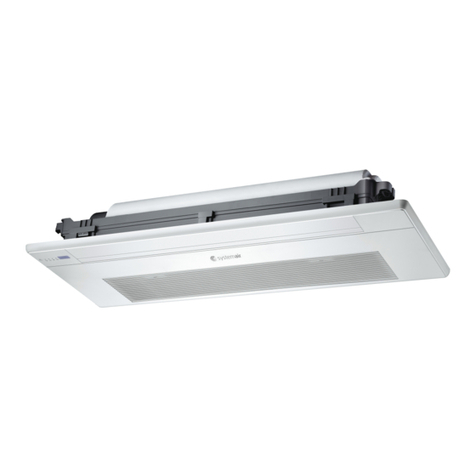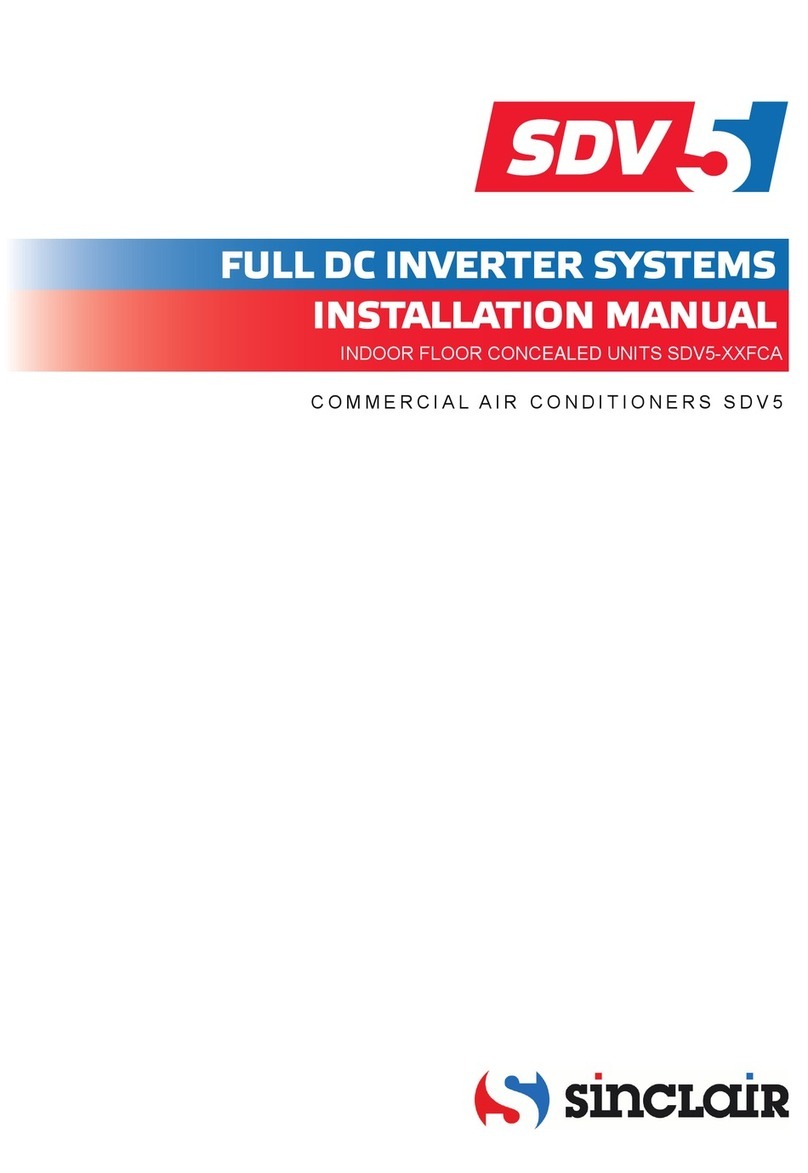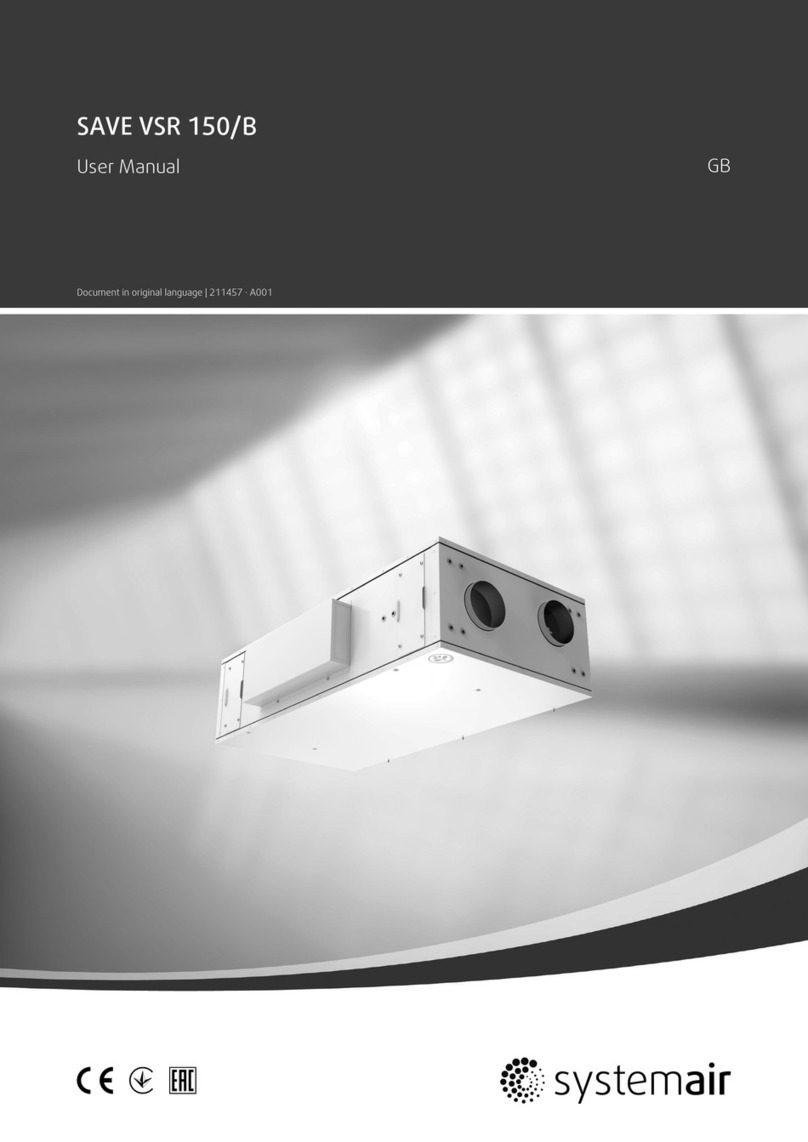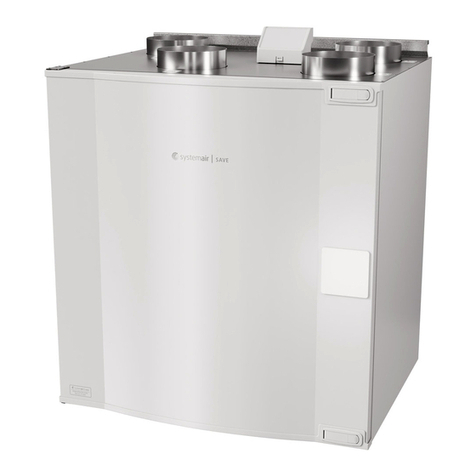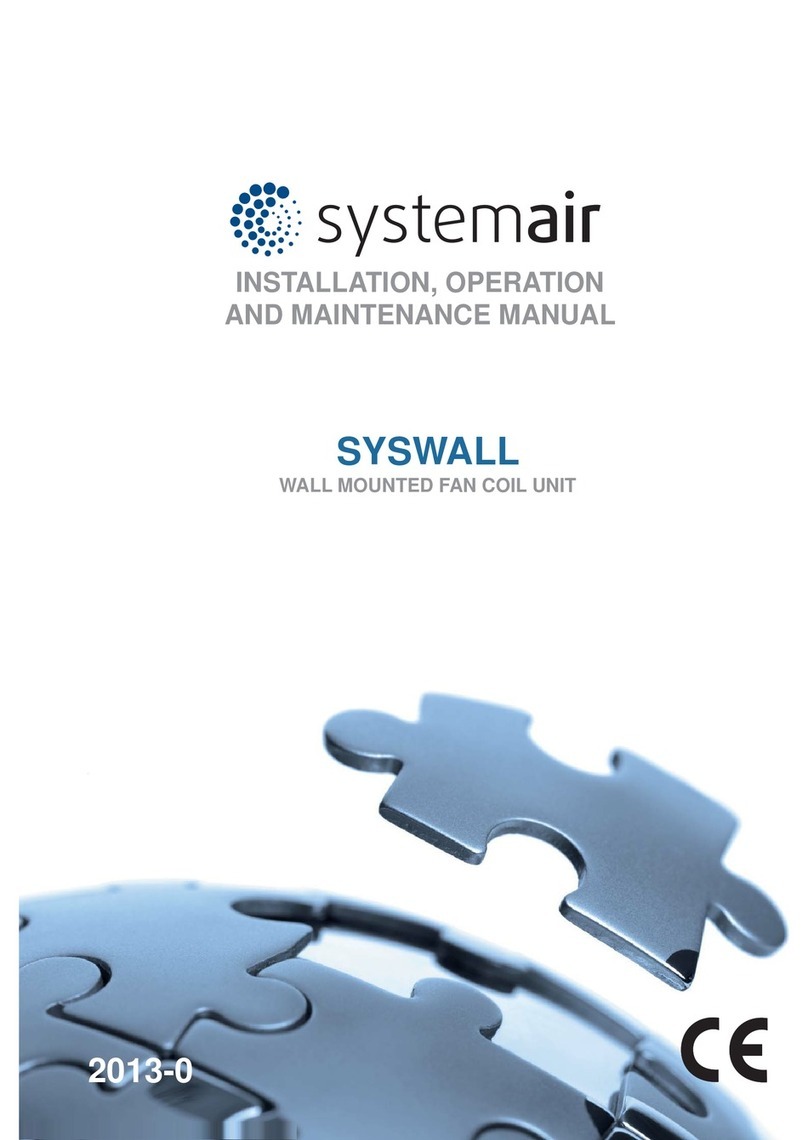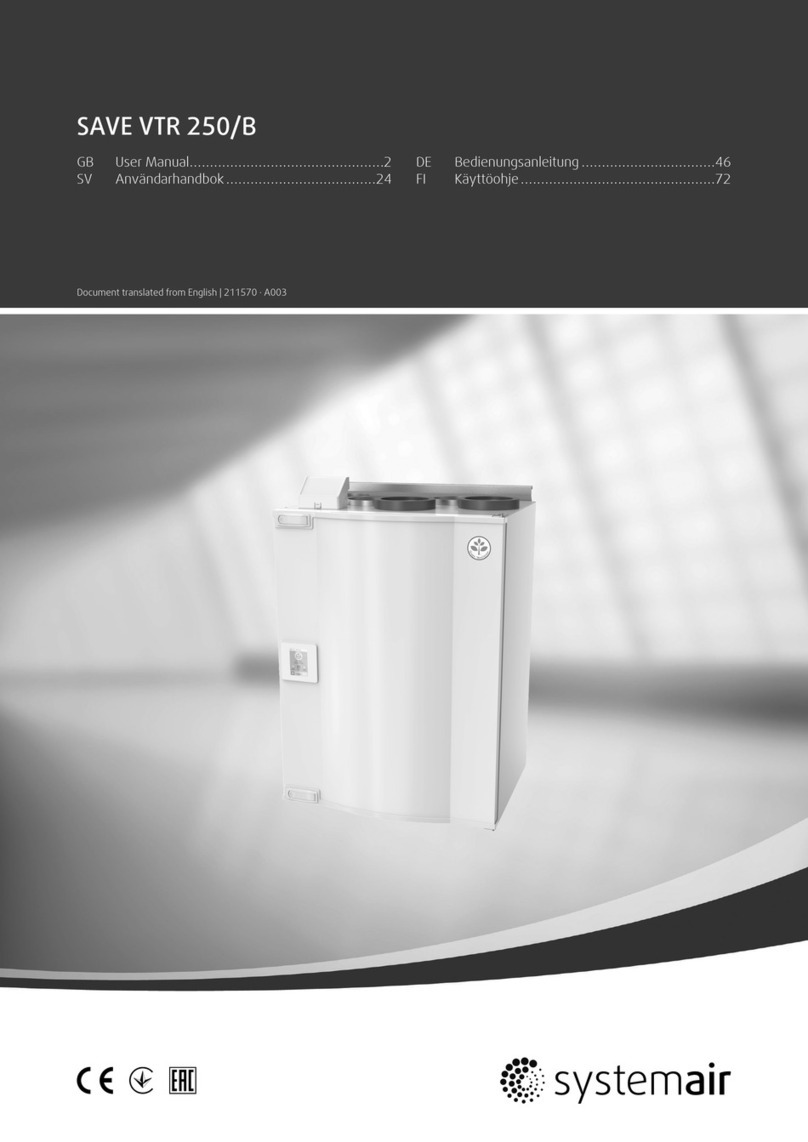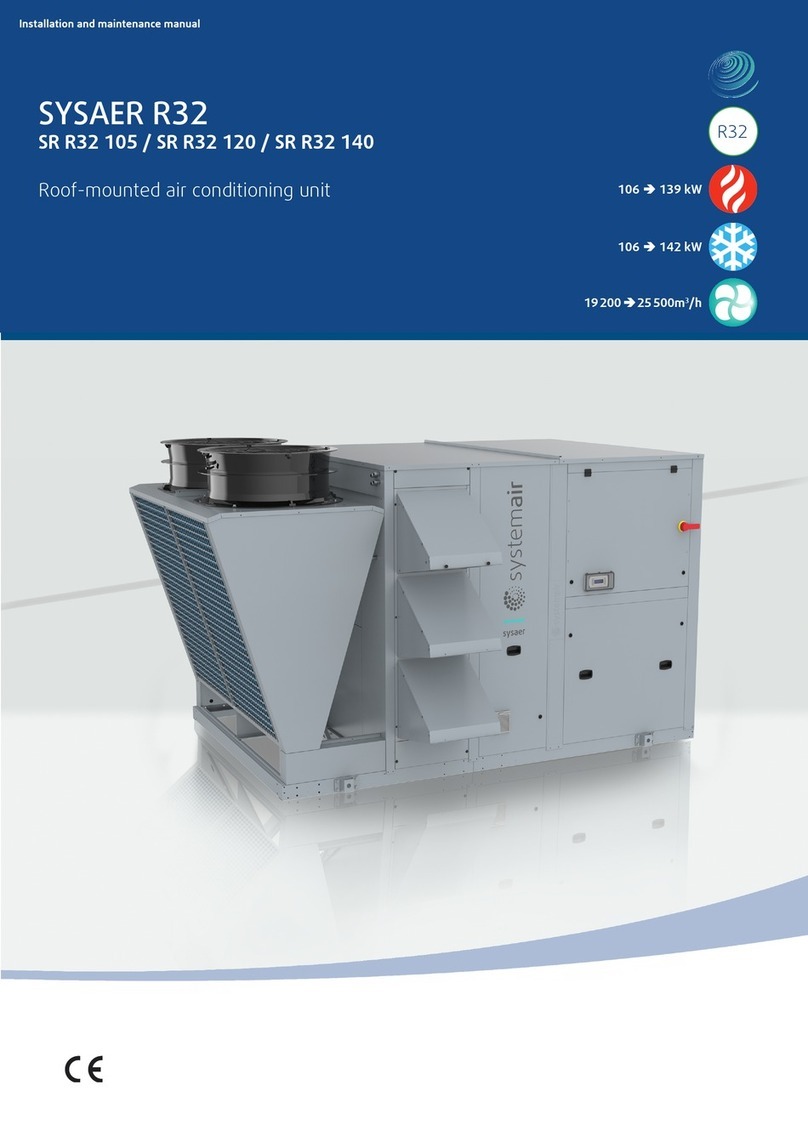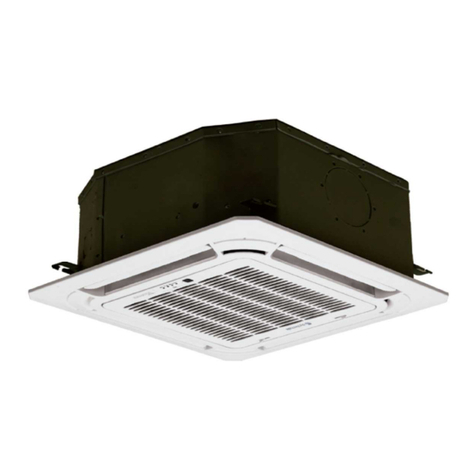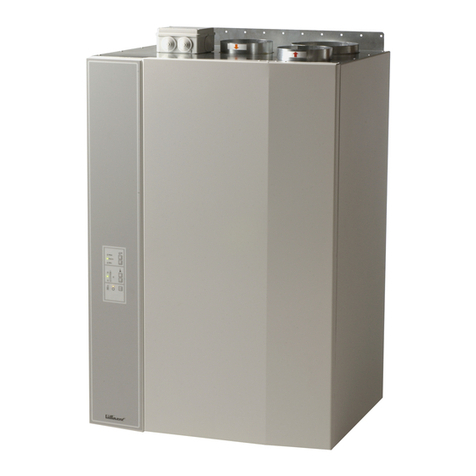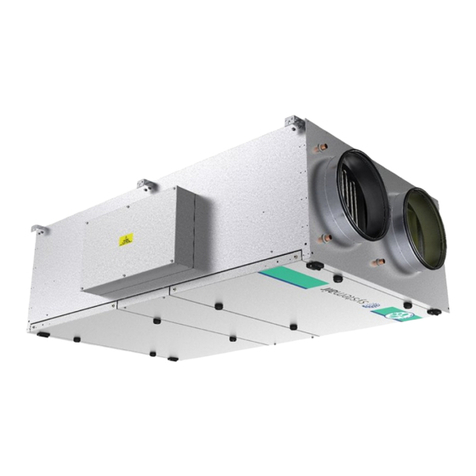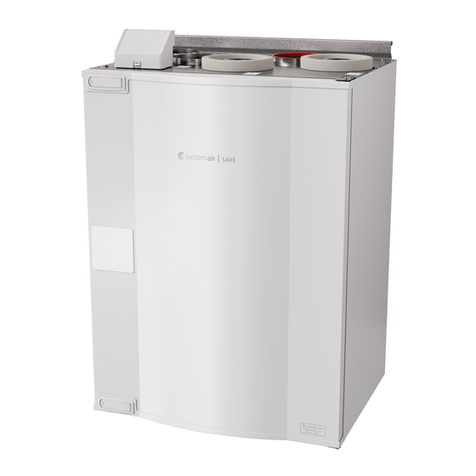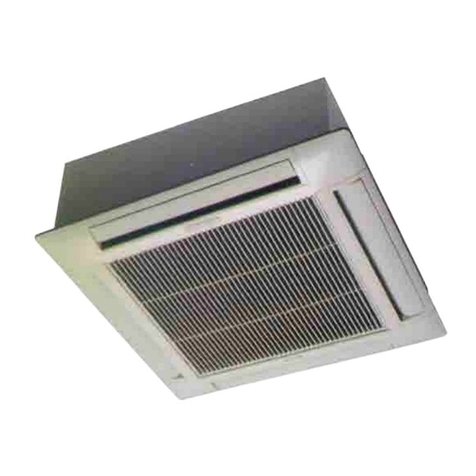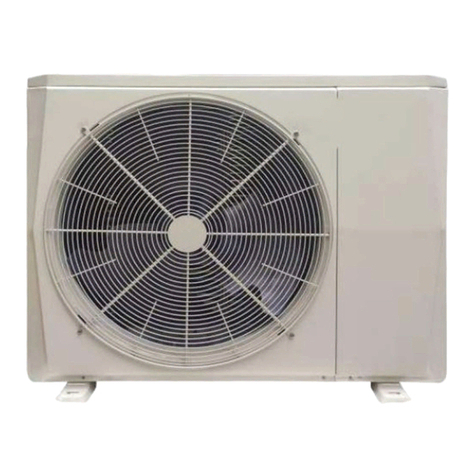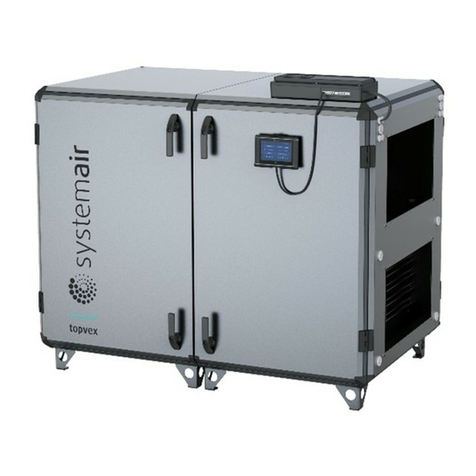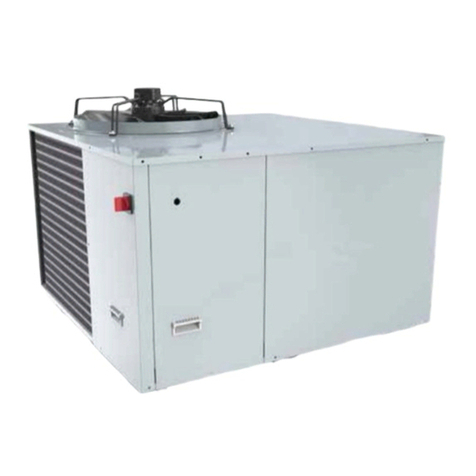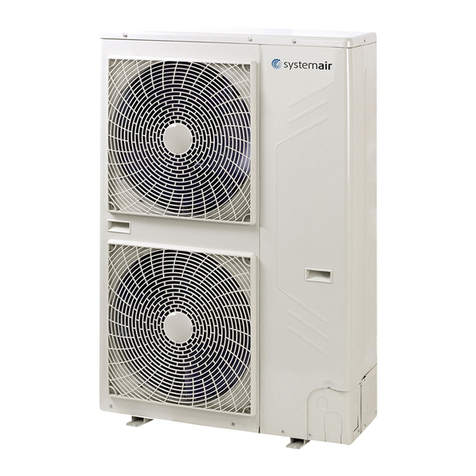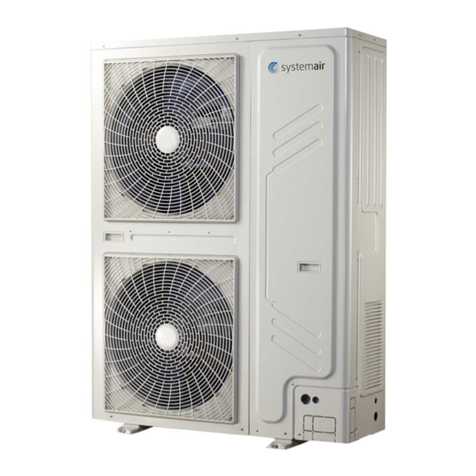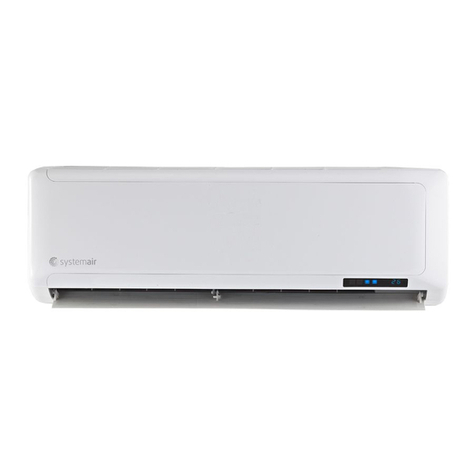INSTALLATION, OPERATION
AND MAINTENANCE MANUAL Vers. 2012-0 low profile
centrifugal fan coil unit
4
Pic. 01
123
INTRODUCTION
RECOMMENDATIONS
This installation, operation and maintenance booklet should always accompany
the fancoil ready consultation by the installer or user if necessary. The appliance
should be installed in compliance with regulations in force in each country and
according to the manufacturer’s or qualified installer’ instruction. The manufac-
turer cannot be held liable for any damage to property or injury to persons and
animals caused by incorrect installation of the appliance. Only qualified persons
should install the appliance and connect it to the mains electricity supply. Before
carrying out any work on the appliance, ensure that it disconnected from the
electricity supply. Read this instruction booklet before installing the appliance.
The appliance is easy to use, ut it is important to read this guide completely
before using for the first time.
This will help you:
- use the appliance in all safety;
- obtain best performance;
- avoid errors;
- respect the environment.
- Do not allow children or unassisted handicapped persons to use the
appliance.
- Do not touch the appliance with wet parts of the body or if barefoot.
- Do not tug, pull or twist electrical cables attached to the appliance, even when
disconnected from the electricity supply.
- Do not open the flaps giving access to the internal parts of the appliance wi-
thout having first put the system on-off switch to “off”.
- Do not introduce sharp pointed objects through the air intake and outlet gril-
les.
- Do not leave packing material (cardboard, staples, plastic bags, etc.) within
reach of children since they could be a source of danger.
- Dispose of correctly.
- Do not sit or climb on the appliance or rest any type of object on it.
- Do not spray or throw water directly on the appliance.
- Do not use the appliance in places with suspended dust/powder or in poten-
tially explosive atmospheres, in very damp environments or in the pre-
sence of oil in suspension or in particularly aggressive atmospheres.
- Do not cover the appliance with objects or drapes that even partially obstruct
the air flow.
- The appliance works by electricity at mains voltage (230 Vac, 50 Hz). Always
bear in mind that mains voltage is potentially dangerous and any appliance
connected to it should be used with caution. Before carrying out any work on the
appliance, disconnect it from the electricity supply (by pulling out the plug from
the mains socket or isolating the supply line by putting the on-off switch to off).
- If the appliance is not to be used for long periods, make sure that the controls
are in the position 0 (off). If the appliance is not going to be used in winter when
temperatures are near to freezing, drain the system and ensure that the applian-
ce heat exchanger has no water in it in order to prevent the formation of ice and
consequent breakage.
- To make the appliance inoperable, disconnect it totally from the electricity sup-
ply.
- It is unsafe to alter or try to alter the characteristics of this product.Any tampe-
ring or alteration renders the warranty null and void.
- In the event of malfunction or failure, do not try to repair the appliance yourself;
contact a qualified technician. Repairs carried out by unqualified persons could
cause damage or accidents.
- Always keep the appliance clean. In particular clean the air filter periodically
(at least once a month).
FAILURE TO COMPLY WITH THE ASSEMBLY INSTRUCTIONS GIVEN IN
THIS GUIDE RELIEVES THE MANUFACTURER OF ALL AND ANY LIABILI-
TY. INCORRECT INSTALLATION COULD CAUSE MALFUNCTIONING OR
FAILURE OF THE APPLIANCE. COULD ALSO REPRESENT A HAZARD
FOR THE USER.
TRASPORTATION, RECEIVING, HANDLING
The appliance is dispatched enclosed in special protective packaging, which
should be kept intact until the appliance is positioned in the final place of in-
stallation.
The appliance should be handled with extreme care, always keeping it in its
original packaging.
To take the appliance out of the packaging, proceed as Pic. 1:
1. Turn the fan coil box upside down and open the bottom.
2. Remove the polystyrene filling and keep it.
3. Keeping the bottom of the box open, turn the pack 180°, taking care that
the contents are firmly hald before resting it gently on the ground. Lift off the
packaging from the appliance.
SAFETY RULES
Secure packs during transportation.
Do not expose to the elements.
Do not tread on packs.
Protect hands with work gloves when dismantling the appliance.
Work in PAIRS if the applinance weighs more than 25 kg.
